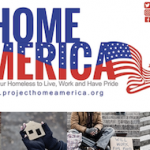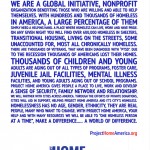These days, we’re told that the American economy is strong. Unemployment is down, the Dow Jones industrial average is north of 25,000 and millions of jobs are going unfilled. But for people like Vanessa, the question is not, Can I land a job? (The answer is almost certainly, Yes, you can.) Instead the question is, What kinds of jobs are available to people without much education? By and large, the answer is: jobs that do not pay enough to live on.
In recent decades, the nation’s tremendous economic growth has not led to broad social uplift. Economists call it the “productivity-pay gap” — the fact that over the last 40 years, the economy has expanded and corporate profits have risen, but real wages have remained flat for workers without a college education. Since 1973, American productivity has increased by 77 percent, while hourly pay has grown by only 12 percent. If the federal minimum wage tracked productivity, it would be more than $20 an hour, not today’s poverty wage of $7.25.
American workers are being shut out of the profits they are helping to generate. The decline of unions is a big reason. During the 20th century, inequality in America decreased when unionization increased, but economic transformations and political attacks have crippled organized labor, emboldening corporate interests and disempowering the rank and file. This imbalanced economy explains why America’s poverty rate has remained consistent over the past several decades, even as per capita welfare spending has increased. It’s not that safety-net programs don’t help; on the contrary, they lift millions of families above the poverty line each year. But one of the most effective antipoverty solutions is a decent-paying job, and those have become scarce for people like Vanessa. Today, 41.7 million laborers — nearly a third of the American work force — earn less than $12 an hour, and almost none of their employers offer health insurance.
The Bureau of Labor Statistics defines a “working poor” person as someone below the poverty line who spent at least half the year either working or looking for employment. In 2016, there were roughly 7.6 million Americans who fell into this category. Most working poor people are over 35, while fewer than five in 100 are between the ages of 16 and 19. In other words, the working poor are not primarily teenagers bagging groceries or scooping ice cream in paper hats. They are adults — and often parents — wiping down hotel showers and toilets, taking food orders and bussing tables, eviscerating chickens at meat-processing plants, minding children at 24-hour day care centers, picking berries, emptying trash cans, stacking grocery shelves at midnight, driving taxis and Ubers, answering customer-service hotlines, smoothing hot asphalt on freeways, teaching community-college students as adjunct professors and, yes, bagging groceries and scooping ice cream in paper hats.
America prides itself on being the country of economic mobility, a place where your station in life is limited only by your ambition and grit. But changes in the labor market have shrunk the already slim odds of launching yourself from the mailroom to the boardroom. For one, the job market has bifurcated, increasing the distance between good and bad jobs. Working harder and longer will not translate into a promotion if employers pull up the ladders and offer supervisory positions exclusively to people with college degrees. Because large companies now farm out many positions to independent contractors, those who buff the floors at Microsoft or wash the sheets at the Sheraton typically are not employed by Microsoft or Sheraton, thwarting any hope of advancing within the company. Plus, working harder and longer often isn’t even an option for those at the mercy of an unpredictable schedule. Nearly 40 percent of full-time hourly workers know their work schedules just a week or less in advance. And if you give it your all in a job you can land with a high-school diploma (or less), that job might not exist for very long: Half of all new positions are eliminated within the first year. According to the labor sociologist Arne Kalleberg, permanent terminations have become “a basic component of employers’ restructuring strategies.”
We might think that the existence of millions of working poor Americans would cause us to question the notion that indolence and poverty go hand in hand. But no.
Home health care has emerged as an archetypal job in this new, low-pay service economy. Demand for home health care has surged as the population has aged, but according to the latest data from the Bureau of Labor Statistics, the 2017 median annual income for home health aides in the United States was just $23,130. Half of these workers depend on public assistance to make ends meet. Vanessa formed a rapport with several of her clients, to whom she confided that she was homeless. One replied, “Oh, Vanessa, I wish I could do something for you.” When Vanessa told her supervisor about her situation, he asked if she wanted time off. “No!” Vanessa said. She needed the money and had been picking up fill-in shifts. The supervisor was prepared for the moment; he’d been there before. He reached into a drawer and gave her a $50 gas card to Shell and a $100 grocery card to ShopRite. Vanessa was grateful for the help. She thought Bayada was a generous and sympathetic employer, but her rate hadn’t changed much in the three years she had worked there. Vanessa earned $9,815.75 in 2015, $12,763.94 in 2016 and $10,446.81 last year.
To afford basic necessities, the federal government estimates that Vanessa’s family would need to bring in $29,420 a year. Vanessa is not even close — and she is one of the lucky ones, at least among the poor. The nation’s safety net now strongly favors the employed, with benefits like the earned-income tax credit, a once-a-year cash boost that applies only to people who work. Last year, Vanessa received a tax return of around $5,000, which included earned-income and child tax credits. They helped raise her income, but not above the poverty line. If the working poor are doing better than the nonworking poor, which is the case, it’s not so much because of their jobs per se, but because their employment status provides them access to desperately needed government help. This has caused growing inequality below the poverty line, with the working poor receiving much more social aid than the abandoned nonworking poor or the precariously employed, who are plunged into destitution.
When life feels especially grinding, Vanessa often rings up Sheri Sprouse, her best friend since middle school. “She’s like me,” Vanessa said. “She’s strong.” Sheri is a reserve of emotional support and perspective, often encouraging her friend to be patient and grateful for what she has. But Sheri herself is also just scraping by, raising two daughters on a fixed disability check. And because Sheri’s housing is subsidized through a federally administered voucher, it is also monitored. “With Section 8, you can’t have people staying with you,” Vanessa said. “So I wouldn’t want to mess that up.” When Vanessa was homeless, Sheri couldn’t offer her much else besides love.
Vanessa received some help last year, when her youngest child, Tatiyana, was approved for Supplemental Security Income because of a learning disability. Vanessa began receiving a monthly $766 disability check. But when the Mercer County Board of Social Services learned of this additional money, it sent Vanessa a letter announcing that her Supplemental Nutrition Assistance Program benefits would be reduced to $234 from $544. Food was a constant struggle, and this news didn’t help. A 2013 study by Oxfam America found that two-thirds of working poor people worry about being able to afford enough food. When Vanessa stayed at a hotel, her food options were limited to what she could heat in the microwave; when she slept in her car, the family had to settle for grab-and-go options, which tend to be more expensive. Sometimes Vanessa stopped by a bodega and ordered four chicken-and-rice dishes for $15. Sometimes her kids went to school hungry. “I just didn’t have nothing,” Vanessa told me one morning. For dinner, she planned to stop by a food pantry, hoping they still had the mac-and-cheese that Shamal liked.
In America, if you work hard, you will succeed. So those who do not succeed have not worked hard. It’s an idea found deep in the marrow of the nation. William Byrd, an 18th-century Virginia planter, wrote of poor men who were “intolerable lazy” and “Sloathful in everything but getting of Children.” Thomas Jefferson advocated confinement in poorhouses for vagabonds who “waste their time in idle and dissolute courses.” Leap into the 20th century, and there’s Barry Goldwater saying that Americans with little education exhibit “low intelligence or low ambition” and Ronald Reagan disparaging “welfare queens.” In 2004, Bill O’Reilly said of poor people: “You gotta look people in the eye and tell ’em they’re irresponsible and lazy,” and then continued, “Because that’s what poverty is, ladies and gentlemen.”
Americans often assume that the poor do not work. According to a 2016 survey conducted by the American Enterprise Institute, nearly two-thirds of respondents did not think most poor people held a steady job; in reality, that year a majority of nondisabled working-age adults were part of the labor force. Slightly over one-third of respondents in the survey believed that most welfare recipients would prefer to stay on welfare rather than earn a living. These sorts of assumptions about the poor are an American phenomenon. A 2013 study by the sociologist Ofer Sharone found that unemployed workers in the United States blame themselves, while unemployed workers in Israel blame the hiring system. When Americans see a homeless man cocooned in blankets, we often wonder how he failed. When the French see the same man, they wonder how the state failed him.
If you believe that people are poor because they are not working, then the solution is not to make work pay but to make the poor work — to force them to clock in somewhere, anywhere, and log as many hours as they can. But consider Vanessa. Her story is emblematic of a larger problem: the fact that millions of Americans work with little hope of finding security and comfort. In recent decades, America has witnessed the rise of bad jobs offering low pay, no benefits and little certainty. When it comes to poverty, a willingness to work is not the problem, and work itself is no longer the solution.









